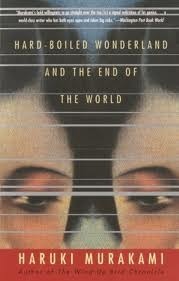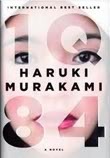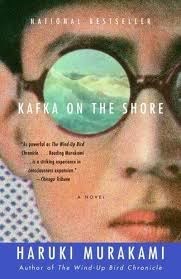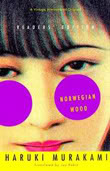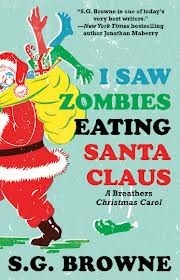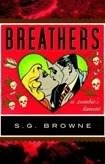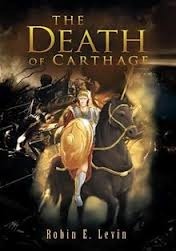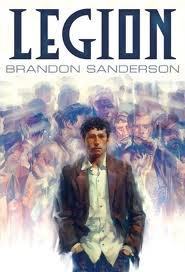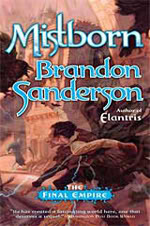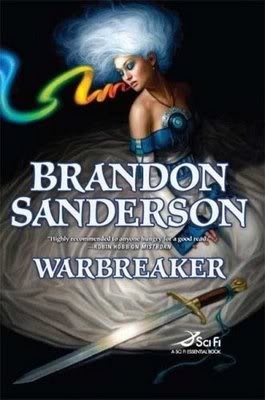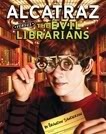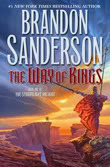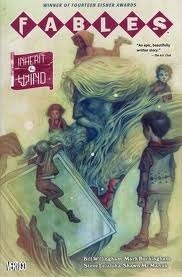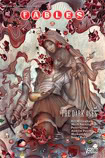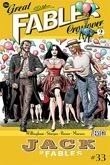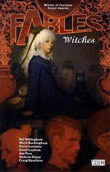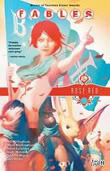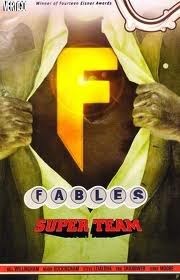Alex C. Telander's Blog, page 69
December 7, 2012
BOOK REPORT: Book News for the Week of December 2nd

Memories of Light
Tor.com has announced it will be running a series of posts leading up to the release of the final Wheel of Time book, A Memory of Light on January 8th, 2013, covering the history of the series and the late author Robert Jordan.
10 Best Books of 2012
The Washington Post presents its top ten books of 2012.
Turning an E-Page
Apple apparently now owns the patent to the turning of the page flourish with ebooks.
Great Fake Endings
Twitter presents some entertaining fake endings to some classic books.
Simon & Schuster & HarperCollins
After the agreed merger between Random House and Penguin, two other publishing giants are now in talks: Simon & Schuster and HarperCollins.


“Hard-Boiled Wonderland and the End of the World” by Haruki Murakami (Vintage, 1993)
Hard-Boiled Wonderland and the End of the World from the incredible Japanese author, Haruki Murakami, ranks as one of the favorites on reader’s lists of his works, and for a relatively short book of around four hundred pages, there is a lot of story going on in what is essentially two separate worlds. This book is the type that will immediately pique your interest, and before you know it, you’ll be wholeheartedly sucked in and won’t want to put it down until you’re done. The other fact about this book is that while it is considered contemporary or literary fiction by most, it is in all honesty, a straight-up science fiction novel.
The odd-numbered chapters are told from the viewpoint of an unnamed character in the “hard-boiled wonderland.” He is a Calcutec, a person who has the ability in his brain to process and encrypt data and to use his subconscious as an encryption key. In this world there is the System, which is part of the government, and that is who the Calcutecs are allied with; then there are the criminal Semiotects who work for the clandestine Factory. The Calcutec takes what seems to be a simple job for a mysterious scientist that turns into something much more, and he learns he’s a very special Calcutec.
The even chapters are told from another unnamed narrator in a place referred to as “the end of the world.” The reader knows the narrator has arrived here recently, a strange place sealed all around by a great wall; there’s a map at the beginning of the book of this place and its various buildings. The narrator also knows that he has been separated from his shadow, who is getting sick. He is assigned his new job of “Dreamreader,” where every night he goes to the library and reads dreams from the skulls of strange beasts. The narrator is very uncertain of this place and knows he needs to escape, the only question is how?
Hard-Boiled Wonderland and the End of the World is a prime example of why so many readers like Murakami, as his sets up an enigmatic world that forces the reader to question, as their curiosity grows and grows. The elements of this book make it a great work of science fiction that may not have all the answers, but will leave the reader contemplating it long after they’ve finished it.
Originally written on March 17, 2012 ©Alex C. Telander.
To purchase a copy of Hard-Boiled Wonderland and the End of the World from Amazon, and help support BookBanter, click HERE.
You might also like . . .


December 5, 2012
“I Saw Zombies Eating Santa Claus: A Breathers Christmas Carol” by S G Browne (Gallery Books, 2012)
The bestselling author of the hilariously entertaining zombie book, Breathers, has a Christmas treat for you: a zombie holiday novella featuring some of the characters you’ve come to love from Breathers. It’s a Christmas miracle like no other; one you won’t soon forget.
Andy Warner is having problems. Other than being a zombie, he’s also a test subject in a horrible lab, where the employees care nothing about their zombie guinea pigs and will poke and prod, burn and dismember, and do whatever they feel like with them. But after the unfolding events of Breathers, this is what his life has become now. Zombies no longer have any rights whatsoever; many have been put to rest permanently, while those still around are trapped in these labs across the country. But Andy has a plan to spring him and his fellow zombies out of this prison, along with the help of a zombie support group.
Once on the outside, Andy does his best to keep his friends safe, but also make sure they have a regular supply of fresh human to keep them healthy and well. Funnily enough, when people treat you like nothing more than a corpse in a lab, you don’t care that much when you want to eat them. But the people from the lab are looking for them, scouring the city, and eventually they will be found. Though Andy also knows he has an ally in one of the laboratory employees, but doesn’t know why.
And in the middle of all this, Andy meets a lonely nine year-old girl who believes he’s Santa, because he was dressed as Santa (the perfect disguise at Christmas) and wants just one gift in the whole world: to have her bad parent of a mother pay more attention to her and love her. So now Andy has a guilt problem to deal with, as well as to save all his zombie friends and himself from getting caught and thrown back in the lab. He knows if he gets caught, he’ll end up on the body farm this time.
Browne does a great job of replicating the voice and tone of Breathers, putting you right back in the world he created and making you realize how much you missed it. Andy even comes up with a few haikus to entertain you. Readers will be thrilled with this Christmas present, and be left wondering if Browne will be writing any more adventures of Andy and his unusual gang.
Originally written on December 4, 2012 ©Alex C. Telander.
To purchase a copy of I Saw Zombies Eating Santa Claus from Amazon, and help support BookBanter, click HERE.


December 3, 2012
Bookbanter Holiday Gift Book Guide
FICTION – NONFICTION – GRAPHIC NOVELS – ORIGINAL WORKS

FICTION – NONFICTION – GRAPHIC NOVELS – ORIGINAL WORKS
We have reached the month of December once again, and the ravenous holiday season is now upon us. Books continue to be churned out each week, whether through print or e-edition. And this year, like any other, had another full run of great titles released, making that decision of what to get that family member, special someone, or the dog so that way you’re basically getting yourself the book harder than ever.
And here is the Bookbanter Holiday 2012 Gift Book Guide. This year I focused just on some of the amazing books I’ve read in 2012. I reached my 100-book mark, and below you will be find my 30 book choices for the year, divided into the categories of fiction, nonfiction and graphic novels. At the very bottom you will find my three works that I released this year, two of which a free ebook downloads, making them the cheapest gift possible!
Anyway, like I said, my focus was on books I read this year, whether they were brand new releases for the year, or older titles I’d been meaning to read for some time, and they ended up making a great impression on me. Where possible, my book reviews are linked when you click on the title.
And if you’re already set on what you want to get from this gift guide, simply click on the cover of the book and you’ll be magically whisked away to Amazon where you can purchase the book in the format of your choosing. Plus I get a little commission out of it to help support Bookbanter. Even if you’re not getting any of these titles, you could still click on one of the covers, as Bookbanter still gets the commission whatever you choose to buy through Amazon.
You can also get the full Bookbanter Holiday Gift Book Guide on my official site, as well as plenty more book recommendations if you’re still undecided.
But enough talk, you’ve got some important holiday shopping to do. So for now, enjoy the Bookbanter Holiday 2012 Gift Book Guide . . .
FICTION
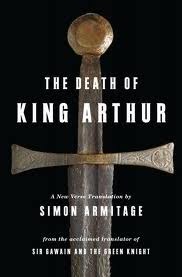
The Death of King Arthur translated by Simon Armitage (Norton, 2011)
Armitage does a fantastic job of creating a translation of this tale that is both entertaining and addictive to read, but still maintains its alliterative originality. Published in a bilingual edition, readers can enjoy glancing over at the original Middle English text and see the original lines and stanzas, and also see how Armitage has masterfully crafted this text to be alliterative as well as encompass the modern English language. Both King Arthur fans and fans of Armitage’s work will not be disappointed.
Lucky Bastard by S. G. Browne (Gallery Books, 2012)
Lucky Bastard is over the top and fast-paced, taking you all over the wonderful city of San Francisco, but Browne does a great job of suspending the reader’s disbelief, creating a character that isn’t perfect by any means – in fact he gets quite annoying – but remains true to the writing and the character, keeping readers hooked to the very last page.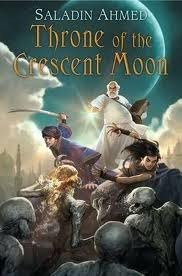
Throne of the Crescent Moon by Saladin Ahmed (DAW, 2012)
Throne of the Crescent Moons is a delightful fresh fantasy story, featuring a new host of gods and magic that don’t fall under the common western paradigm, set in a fun world that will have readers quickly tearing through the 270-page book and anxious for more.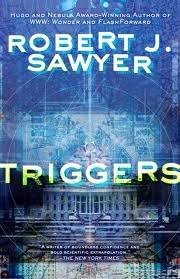
Triggers by Robert J. Sawyer (Ace, 2012)
In Triggers, Robert J. Sawyer should first be applauded for a wonderfully diverse cast, as readers are immediately introduced to a powerful female secret service agent, an impressive African-American female doctor who is the president’s primary physician, and the interesting Dr. Singh, who is actually Canadian, which is Sawyer’s own nationality. The book juggles an impressive cast of characters, which Sawyer does excellent job of keeping both straight and complex.
Blackout by Mira Grant (Orbit, 2012)
The conclusion to the action-packed and riveting Newflesh trilogy, Blackout, does what Feed did in exploding out of the gate with great writing, strong characters, and a story you couldn’t stop reading; as well as what Deadline continued with in ratcheting up the tension and delving out shocking plot twists to keep readers demanding more. The most important thing about this book is that it remains true to its characters in every way so that if the reader has been paying attention from the first line of the first book, they shouldn’t be too surprised, and yet it’s still satisfying and rewarding to see the events you hoped might happen on the page before you, as well as some great shockers you might not have seen coming.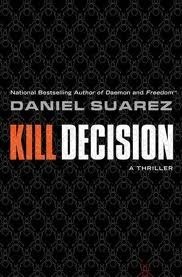
Kill Decision by Daniel Suarez (Dutton, 2012)
Daniel Suarez has once again managed to take hold of a subject that is featured in today’s headlines and spin it into a bunch of what ifs that serve to educate as well as terrify. Told with skill, tension and drama, Kill Decision is a book that won’t leave you sleeping easy at night as you imagine those unmanned drones flying overhead.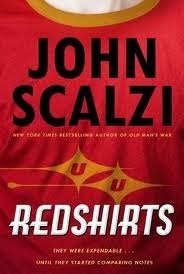
Redshirts by John Scalzi (Tor, 2012)
Most scifi fans are familiar with the curse of the “redshirts.” For those who are not, it applies to the original Star Trek show where any minor character in an episode wearing a red shirt ultimately ended up getting killed on an away mission before the end of the episode. Bestselling author John Scalzi takes this humorous concept to a whole new level in his appropriately titled novel Redshirts.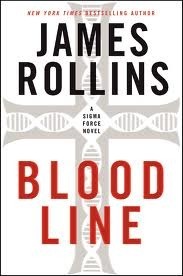
Bloodline by James Rollins (William Morror, 2012)
Rollins continues to do what he does best in Bloodline, weaving unusual storylines together with links the reader never saw coming. A strong cast featuring some impressive female characters makes this a thrilling read; though it is contrasted with the shocking procedures some other female characters have to endure. Bloodline is not for those with a weak stomach. But for those wishing to get some answers about the clandestine group known as the Guild, this is the book for you.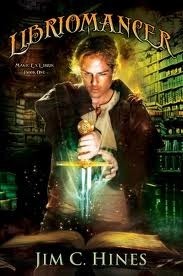
Libriomancer by Jim C. Hines (DAW, 2012)
Libriomancer is simply a fun book, featuring a great story and some fantastic characters. Hines has plenty of fun throwing in many nerdy book references, as well as the books libriomancers choose to use to gain special objects. With a diverse cast of interesting people, Libriomancer is a fun, addicting read that will leave readers impatiently wanting more.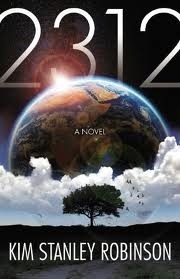
2312 by Kim Stanley Robinson (Orbit, 2012)
Robinson has outdone himself with 2312, blending a story of gripping science fiction, a captivating plot, and unique characters that exist a future world of acceptance and normalcy to them that seems advanced and developed when compared to our. A delight to read, 2312 will be keeping you up late, reading.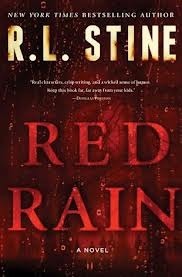
Red Rain by R. L. Stine (Touchstone, 2012)
Bestselling author R. L. Stine has terrified children for decades with his Goosebumps and Fear Street series, and now for the first time (and long overdue, in my opinion) he seeks to create fear in the minds of grownups with his first adult horror novel, Red Rain. But fans of Stine need not worry that the book will feature too many “old people,” for the devils at the heart of this story are identical twin boys.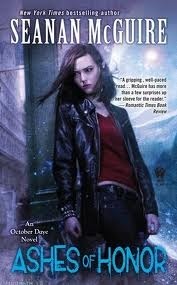
Ashes of Honor by Seanan McGuire (DAW, 2012)
Just another ordinary day of mayhem and adventure for Toby, though this time the stakes seem higher than ever. And she can easily identify with a half-changeling not knowing what is really going on and how to control her powers, and if this were to get out about Etienne, it would ruin him. Plus there’s Tybalt who keeps lending a helping hand and is always there when she needs him, and Toby really needs to work out what her feelings are about him. Just another ordinary day.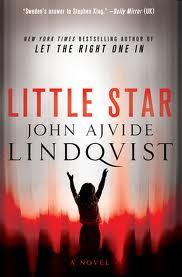
Little Star by John Ajvide Lindqvist (Thomas Dunne, 2012)
Lindqvist’s novel is another addictive read, like his others, with a seemingly simple story that turns into something dark and sinister, combined with the harsh geology of Sweden, and his own unusual characters. Little Star will keep you up late, and by then you’ll be too scared to go to bed.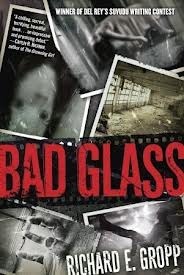
Bad Glass by Richard E. Gropp (Ballantine, 2012)
A gripping kind of horror, Bad Glass uses an interesting device of describing photographs and video footage that are shocking and unbelievable, as well as drawing the reader deeper and deeper into the story. While the ending feels a little rushed, as the answers finally start to come, the story is well worth the wait.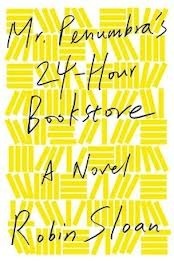
Mr. Penumbra’s 24-Hour Bookstore by Robin Sloan (Farrar, Straus & Giroux, 2012)
Robin Sloan’s debut novel plays well on the enjoyment of the reader, as well as slowly unraveling the mystery, in addition to taking the reader around San Francisco and into the heart of the Googleplex, and then across the country and back in time through a hidden history, all on the subject of books and their meaning. Readers will be hooked with Sloan’s easy reading style, and curious tale, until the very end.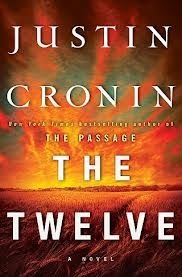
The Twelve by Justin Cronin (HarperCollins, 2013)
Justin Cronin’s long-awaited sequel to the bestselling The Passage brings readers back to the incredible post-apoclyptic world of killer vampires and those remaining humans trying to eke out their survival. Cronin also returns to the time before the end of the world and continues some unfinished storylines.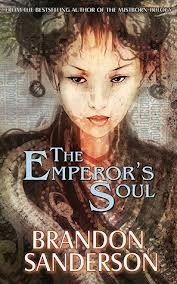
The Emperor’s Soul by Brandon Sanderson (HarperCollins, 2013)
From the bestselling author of The Way of Kings and the Mistborn trilogy comes a new fantasy novella involving a forger who has magical powers to forge anything whether it be a work of art, an inanimate object, an entire wall or building, and even when necessary, someone’s soul.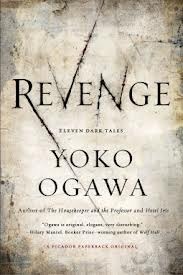
Revenge by Yoko Ogawa (HarperCollins, 2013)
In the style of Haruki Murakami, comes this popular Japanese author’s short story collection of tales that will terrify and enthrall. Revenge has an element of its title in most of these original tales that are linked together through small details.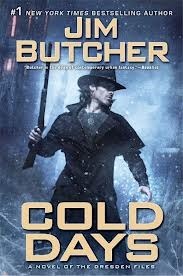
Cold Days by Jim Butcher (HarperCollins, 2013)
Harry Dresden is finally back after his visit with the afterlife in Ghost Story, and now has to begint he next chapter of his life. And that’s all I’m going to say about that.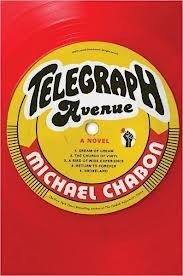
Telegraph Avenue by Michael Chabon (HarperCollins, 2013)
From the bestselling author of The Adventures of Kavalier and Clay and The Yiddish Policemen’s Union comes a new novel about two close friends owning and running Brokeland Records on the borderlands between Berkeley and Oakland.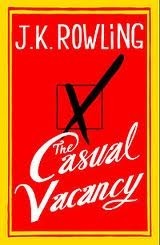
The Casual Vacancy by J. K. Rowling (HarperCollins, 2013)
In J. K. Rowling’s first adult novel, she presents an idyllic English town where everything seems perfect and well, until the death of a popular person in town starts to reveal skeleton after skeleton that has remained hidden in this town’s closet for a long time.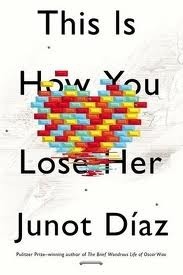
This is How You Lose Her by Junot Diaz (HarperCollins, 2013)
From the award-winning author of The Brief and Wondrous Life of Oscar Wao comes his new novel about the power of love and everything associated with it, pain, pleasure, lost, heart-break, and joy through the lens of the incredible Dominican Republic.
NONFICTION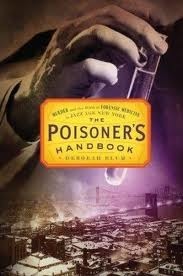
The Poisoner’s Handbook by Deborah Blum (HarperCollins, 2013)
In this well-titled book, Blum presents a fascinating history of poisons and when they were created and discovered, but coupled with this is also the amazing work of detectives and coroners who furthered science and medicine to discover how to identity and fight these poisons.
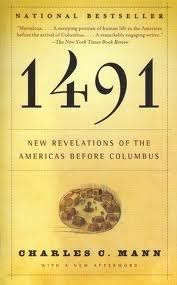
1491 by Charles C. Mann (Knopf, 2005)
Much as Guns, Germs and Steel was revolutionary in changing our outlook on the way the world is, 1491 has the same affect on how the world views the Americas, what its true history was, the immense effect it had on the world after Columbus, and how the idea that these people were simple and primitive is just ridiculous. The book is by no means an easy read, but once the reader makes it through, the fulfillment is well worthwhile and enlightening to say the least.
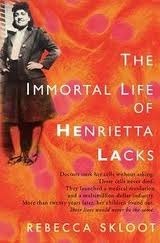
The Immortal Life of Henrietta Lacks by Rebecca Skloot (HarperCollins, 2013)
This moving tale covers the sad passing of Henrietta Lack to ovarian cancer, and how her unique cells that continue to live on to this day have become a part of the world of science and have played a part in most science laboratories across the globe, and yet the family of Henriette Lacks still remains poor and without health insurace, after her cells have gone on to be crucial in so many cures and the further of medicine.
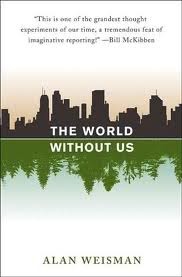
The World Without Us by Alan Weisman (Thomas Dunne, 2007)
Alan Weisman’s introspective book, The World Without Us, which became a bestseller, seems clear when one sees and reads what’s on the front cover. Yes, it’s a book about the concept of what the world would be like if humanity suddenly disappeared, and how long it would take to recover from the severe imprint we’ve made upon it. But the book is also much more, as Weisman analyzes why we have had this effect on the planet, and to what extent it has reached.
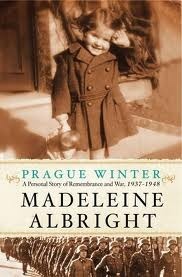
Prague Winter by Madaleine Albright (HarperCollins, 2012)
Albright has clearly done a lot of research for this book, not just on her own family, but on the history and sources of the period, along with many photos from that time, it presents a thorough picture of this part of Europe during World War II and the rise of the Fuhrer. It is also an insight into the culture of the Czechs, a people who do not bow down lightly and whose patriotism and culture is everything to them. In some ways, Prague Winter reads like a powerful history book that would make great reading for any high school or college student wanting to learn more about the period; and at the same time it is a poignant biography of these people and of this child that was shaped into the incredible woman that she was to become.
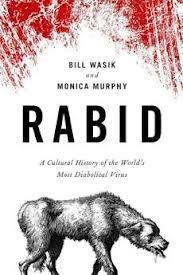
Rabid by Bill Wasik and Monica Murphy (Viking, 2012)
Few know that when someone is suffering from rabies, they have an innate aversion to water; just seeing a glass of it will make them turn violent as they try to get away from it. Rabid: A Cultural History of the World’s Most Diabolical Virus is the story of the hows and whys of rabies.
GRAPHIC NOVELS
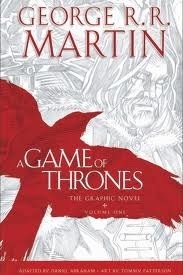
A Game of Thrones: The Graphic Novel, Volume 1 by Daniel Abraham and George R. R. Martin (Bantam, 2012)
For anyone familiar with George R. R. Martin, his work, and the books and authors he likes, it should come as no surprise that his good friend, Daniel Abraham of The Dragon’s Path, was the one chosen to adapt his bestselling first novel of his Song of Ice and Fire series, A Game of Thrones. In the introduction, Martin gives a brief history of how the epic fantasy series came to be and the various adaptations that have been done, including the now popular and successful HBO series. He also talks about their long search for the right artist to illustrate this graphic novel and how once they found Tommy Patterson; he was the right guy for the job.
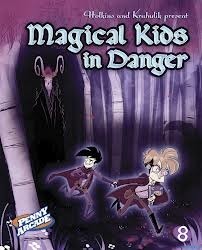
Penny Arcade, Volume 8: Magical Kids in Danger by Jerry Holkins and Mike Krahulik (HarperCollins, 2013)
The Penny Arcade duo are back with their next hilarious and addicting collection of comic strips, collection the year of 2007. Presented again with Jerry Holkins commentary on each strip, it’s a necessary addition to anyone’s collection.
ORIGINAL WORKS

Kyra: The First Book of Enchantus by Alex C. Telander (CreateSpace, 2012)
Kyra is a teenage girl who has problems fitting in with school and friends and just her whole life in general; even her family seems odd. But when she closes her eyes at night, she is transported to another world, a place of wonder and joy, where she finds her real friends, and everything she’s ever wanted. And then the day arrives when she is finally transported to this world, and it is just as incredible as she ever imagined.
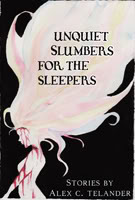
Unquiet Slumbers for the Sleepers: Stories by Alex C. Telander (Smashwords, 2012)
In this debut collection, readers get to see into the dark and twisted mind of Alex C. Telander. “Unquiet Slumbers for the Sleepers” features ten original short stories that run the gamut of genres, from dark and bloody horror to futuristic science fiction; from a captivating thriller to an epic tale of historical fiction. And then there are those stories that simply can’t be classified, but once you read them, you won’t be able to get them out of your mind . . .

In That Quiet Earth: Stories by Alex C. Telander (Smashwords, 2012)
Much like his first collection, “Unquiet Slumbers for the Sleepers,” Alex C. Telander’s new short story collection, “In That Quiet Earth,” runs the gamut of genres, showing his extensive breadth and range as writer. Readers will not be disappointed and will find a number compelling storylines and complex characters to become engaged in reading about.


November 30, 2012
“Little Star” by John Ajvide Lindqvist (Thomas Dunne Books, 2012)
From the international bestselling author of the chilling and horrific Let the Right One, Handling the Undead and Harbor comes a new novel that appears innocent and charming at first, but eventually leads the reader down a long dark path, covered in blood and filled with bodies. Little Star will lull you into enjoyment and then terrify you all the way to the end.
Lennart finds an abandoned baby in the woods, left for dead. He brings it home, feeds and looks after it, much to the reluctance of his wife, Laila. A musical duo who have essentially disappeared into obscurity, Lennart finds a new lease of life with this baby who grows to become a beautiful young girl with a unique singing voice. Jerry, the son, eventually looks after the girl, moving to Stockholm, after his parents suffer a gruesome end, and the child enters a national singing contest and becomes a celebrity, renowned throughout Sweden. But she also has plans of her own, viewed through her fractured, distorted lens of a psyche, with an idea of what is good and right not shared by many others.
Lindqvist’s novel is an addictive read, much like his others, with a seemingly simple story that turns into something dark and sinister, combined with the harsh geology of Sweden, and his own unusual characters. Little Star will keep you up late, and by then you’ll be too scared to go to bed.
Originally written on November 10, 2012 ©Alex C. Telander.
To purchase a copy of Little Star from Amazon, and help support BookBanter, click HERE.


November 28, 2012
“The Death of Carthage” by Robin E. Levin (Trafford Publishing, 2012)
Fans of historical fiction on the history and events of ancient Rome will find plenty to enjoy in Robin E. Levin’s The Death of Carthage. The author has clearly done her research, filling the pages with crucial details of this past world that does a great job of immersing the reader in the time period and making them feel like they are really there.
The book is set during the time of the Second and Third Punic wars between Rome and the battle-hardened Carthage, divided into three separate stories. The first, “Carthage Must be Destroyed,” is told in the first person from the viewpoint of Lucius Tullius Varro, who finds himself joining the Roman cavalry, serving in Spain under Scipio and playing a main part in the Second Punic war. The second story, “Captivus,” is told by Enneus, Lucius’s first cousin, who finds himself captured by Hannibal’s general, Maharbal, and after a terrible Roman defeat, must now fight to stay alive. In the final story, The Death of Carthage, told from the viewpoint of Enneus’s son, Ectorius, is serving as a translator who plays witness to the definite and final end of Carthage.
The Death of Carthage is stiff at times, and lacking in character growth and development, as things just happen for the characters, as opposed to emotions and experiences coloring the story; at times the story feels like a history book. Nevertheless, the details are there to truly entrance the reader and make them remember this incredible time in the history of the world.
Originally written on June 27, 2012 ©Alex C. Telander.
To purchase a copy of The Death of Carthage from Amazon, and help support BookBanter, click HERE.


November 26, 2012
“Legion” by Brandon Sanderson (Subterranean Press, 2012)
Anyone who’s read Brandon Sanderson knows he’s a prolific writer with a number of epic fantasy tomes under his belt already. When done with a big project, Sanderson takes a sort of break from working on the next long book and works on something shorter and different. Legion is exactly that: something very short and different from what his fans are used to, but at the same time it shows his breadth and ability as a writer.
Stephen Leeds (AKA Legion) is a troubled man who sees imaginary people. They are hallucinations that only he can see, but when he has a question to answer or a problem to solve, these hallucinations (which are logically just figments of his imagination) are able to provide an answer to said question or skillfully solve said problem. Legion is also able to create further hallucinations to fit his needs: if he needs to learn a specific language, he creates a hallucination who speaks it; if he needs to know a particular type of engineering, he creates that engineer. And now Legion’s services are being required once more, as he must search for the missing Balubal Razon, who has a very special camera in his possession that could change the very world as we know it.
Sanderson has done what he does best: creating a compelling story, with powerful characters, and a riveting plot, only this time the stage is not that of epic fantasy. Also in Sanderson’s classic style, while the main mystery is solved, the reader is left wanting more of this unique world and its fascinating characters.
Originally written on September 12, 2012 ©Alex C. Telander.
To purchase a copy of Legion from Amazon, and help support BookBanter, click HERE.
You might also like . . .


November 23, 2012
“Fables, Volume 17: Inherit the Wind” by Bill Willingham, Mark Buckingham (Vertigo, 2012)
A new storyline continues in the unique world of Fables, as we focus on our main story at hand: that of Bigby and his family. The great North Wind was the one to finally slay the seemingly indestructible Mr. Dark, but has paid the ultimate penalty in losing his life. Now a successor must be chosen to take the throne, and Bigby has renounced all intentions of this, so it will be up to one of his and Snow’s cubs to take the mantle. The question is which one? The parents get to watch as their children are subjected to a series of trials and tests by the North Wind’s servants, while the East, West and South winds hungrily watch, looking to seize this power vacuum.
Meanwhile, things continue along in the rest of the world, as Rose Red continues cleaning up and making sure everything is right on the Farm; the monkey Bufkin continues his attack against the new ruler of the Pan Ozian Empire; and deep in the shadows of Castle Dark, Nurse Spratt prepares herself for revenge, awaiting her first victim.
Inherit the Wind continues a number of Fables storylines, keeping readers riveted as to what is happening with some of their favorite characters. Along with some secondary storylines, it makes for another great collection of entertaining plot and beautiful artwork.
Originally written on October 24, 2012 ©Alex C. Telander.
To purchase a copy of Fables: Inherit the Wind from Amazon, and help support BookBanter, click HERE.
You might also like . . .


November 21, 2012
BOOK REPORT: Book News for the Week of November 18th
Big News From Jeff Carlson
Author of the bestselling Plague Year trilogy, Jeff Carlson has just sold his next novel, an apocalyptic thriller, Interrupt, to 47 North with a planned release date of July 2013.
Kindle Reading Share
In a recent survey it was determined out of all ereaders, 55% read their ebooks on a Kindle device.
France Makes Tax Claim Against Amazon
France the country has filed a tax claim in the amount of $252 million to Amazon for unpaid taxes.
Best Books of 2012
It’s the time of year for “best books of the year” lists and Amazon has just released theirs.


November 19, 2012
“Rabid: A Cultural History of the World’s Most Diabolical Virus” by Bill Wasik and Monica Murphy (Viking, 2012)
Rabies. Rabid. The words automatically conger up images and ideas; ravenous animals, primarily dogs. Slavering at the mouth; demented and violent. You’re probably also thinking about Cujo, whether it is the movie or the book by Stephen King. All these ideas are correct, in a way, but few people know the whys and hows. Few know that when someone is suffering from rabies, they have an innate aversion to water; just seeing a glass of it will make them turn violent as they try to get away from it. Rabid: A Cultural History of the World’s Most Diabolical Virus is the story of the hows and whys of rabies.
Authors Bill Wasik and Monica Murphy take the reader on a combined history, sociological and science lesson. They go way back into the past looking at where the virus likely first originated, where it first appears in the written word, and how it has been used throughout history in writing. How the word has changed and become part of our vocabulary. Rabid is also a look at how society has dealt with the disease through time and across the globe. And finally, the authors give you the science behind the virus, how it infects, how it affects, and what exactly makes it work. It is a fascinating read on a disease that many know little about.
Originally written on October 23, 2012 ©Alex C. Telander.
To purchase a copy of Rabid from Amazon, and help support BookBanter, click HERE.



